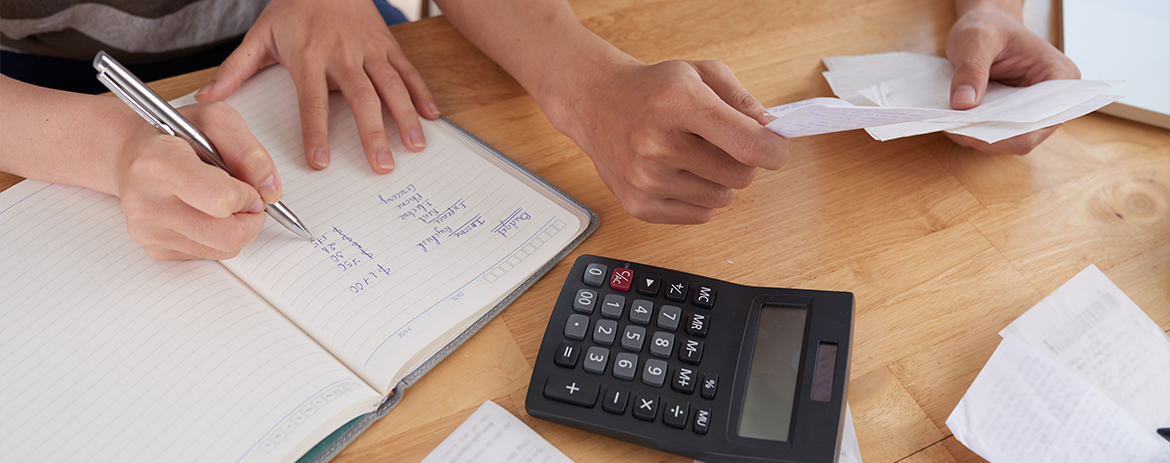The first 3 steps to paying down your debt
Have you entered the new year with existing debt from 2020?
You’re not alone. More than one in three Aussies enter January with Christmas debt from one year to the next1.
When you combine this with household debt, credit card debt and buy-now-pay-later owings, it’s fair to say many of us will need a helping hand to get on top of our bills.
Household debt has significantly increased with the latest household to net disposable income ratio sitting at 210%2 , meaning that on average, people have debt equal to two years’ disposable income. There are also more than 13.7 million credit cards in circulation accounting for a national debt of $21.1 billion3. The buy-now-pay-later (BNPL) industry is also booming. As of June 2019, there were more than 6.1 million accounts, representing 30% of the Aussie adult population and totalling more than $5.6 billion in the 2018-19 financial year4.
As we enter the new year, we have outlined three easy steps for you to start the year on the right foot and tackle your debts in 2021.
1. Lay it all out on the table
This first step is easy. Grab all your latest bills, statements, invoices, anything you owe. Go do it now, we’ll wait…
Find the most recent copies of your mortgage, rent, electricity, water, gas, phone, internet, car insurance, credit cards, BNPL statements and physically lay it out on the table.
Debt can feel overwhelming. Seeing what you owe and tallying it all up is confronting but it is also a good motivator to get on top of it.
With each debt work out how much you owe and the repayments.
This will prepare you for step 2.
2. Identify your smallest debt
So, you’ve laid out your debts and identified the monthly repayments. Next, grab a piece of paper and list the debts from smallest to largest by outstanding debt amount. Number 1 will be the smallest.
Keep this list handy! Store it in the same folder as all your other bills and expenses.
Now, grab your bill with the lowest debt and keep it in a visible place – maybe the fridge, bathroom mirror, anywhere you can see it.
Your focus over the next few months will be to use any savings you have after making your monthly debt repayments, to pay off the smallest debt.
This will involve making additional payments to this debt. Before you know it, your smallest debt will be paid off. You will then put this money into the next smallest debt (that’s number 2 on your list) and so on. Continue this process until all your debts are paid. This is known as the snowball effect.
3. Automate your repayments
One of the easiest ways to keep your repayments on track is to set and forget.
All you need to do is set up the repayments for each debt to automatically debit from your account each month. Plus, don’t forget to set a little extra repayment for the smallest debt.
It’s a good idea to set this up soon after you get paid.
Why this method works
The method is called the ‘Snowball Effect’. The idea is that the satisfaction you get from paying off the first debt motivates you to pay off the next one. This is because each debt you pay off feels like a big achievement, inspiring you to keep going. It’s also much easier to focus on one thing (debt) at a time, so you’re unlikely to get overwhelmed and give up.
Footnotes
1. https://www.finder.com.au/press-release-jan-2020-7-2-million-aussies-will-nurse-a-new-year-financial-hangover
2. https://data.oecd.org/hha/household-debt.htm
3. https://www.finder.com.au/credit-cards/credit-card-statistics
4. https://download.asic.gov.au/media/5852803/rep672-published-16-november-2020-2.pdf
The information provided in this blog post is general in nature and does not constitute personal financial advice. It has been prepared without taking into account your personal objectives, financial situation or needs. Before making any decisions, it is important for you to consider your personal situation and seek appropriate tax, legal and other professional advice.
Credit Simple
Credit Simple gives all Australians free access to their credit score, as well as their detailed credit report. See how your credit score compares by age, gender and community and gain valuable insights into what it all means.
All stories by: Credit Simple


